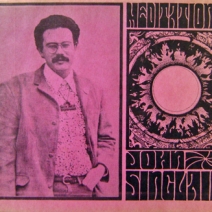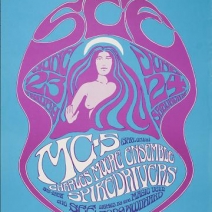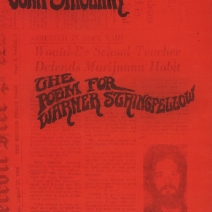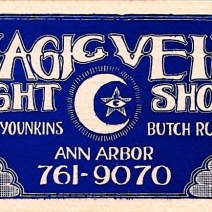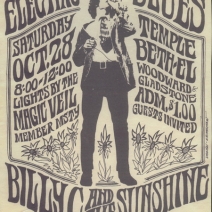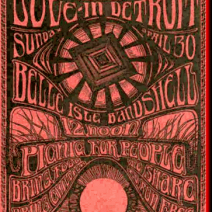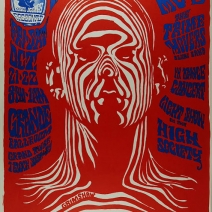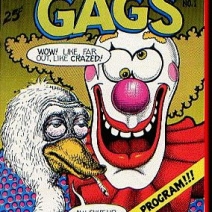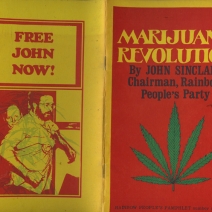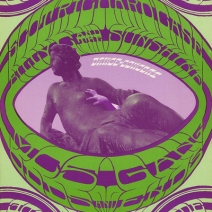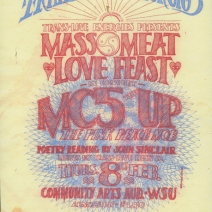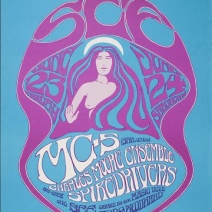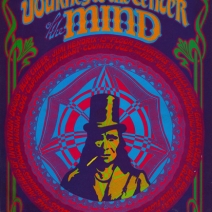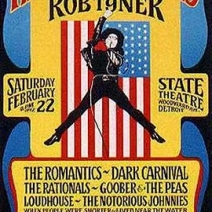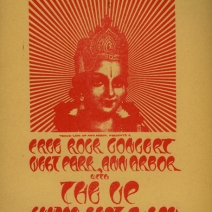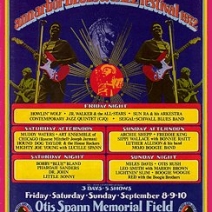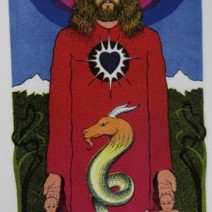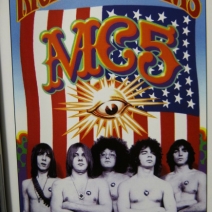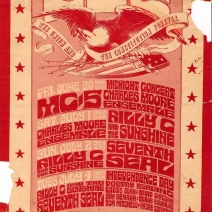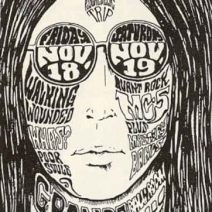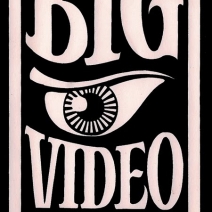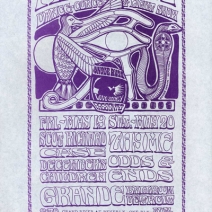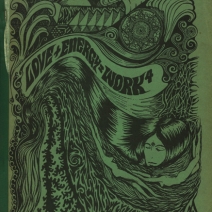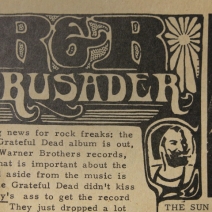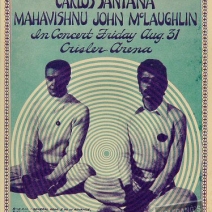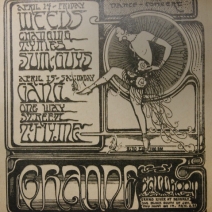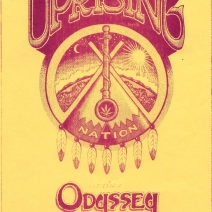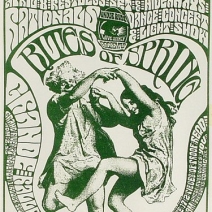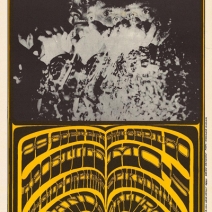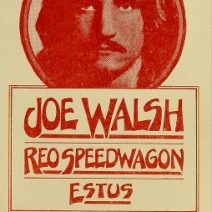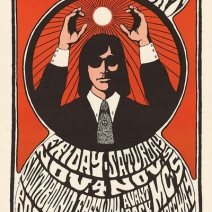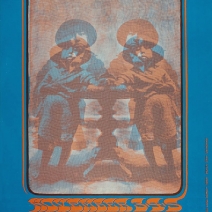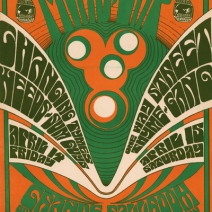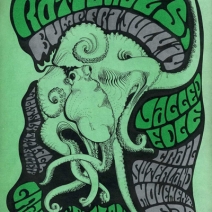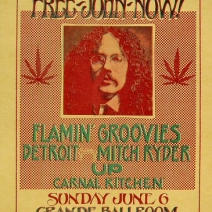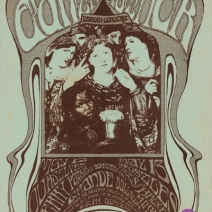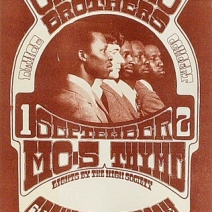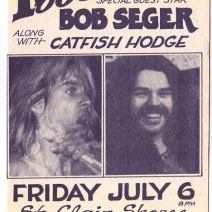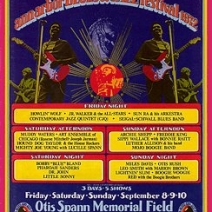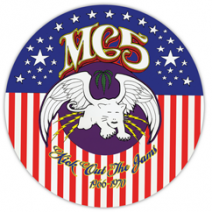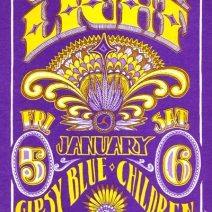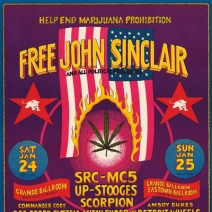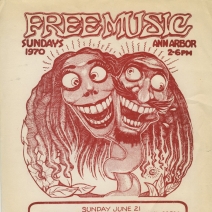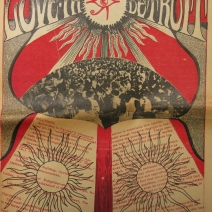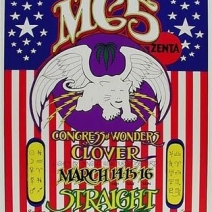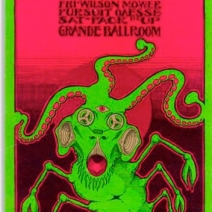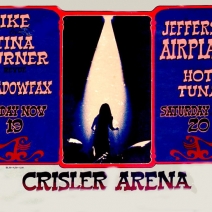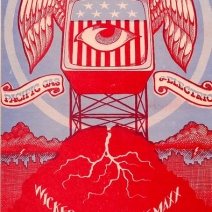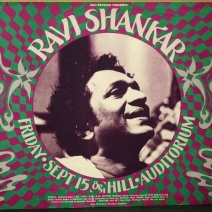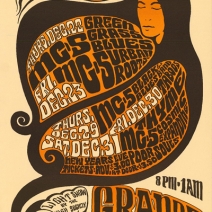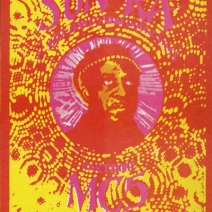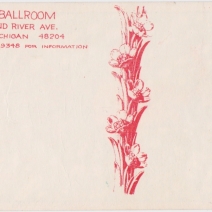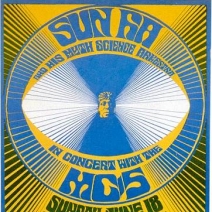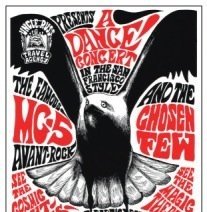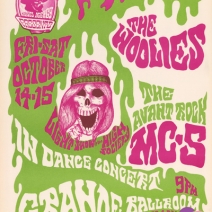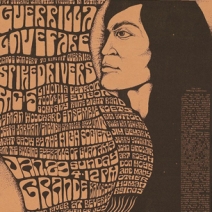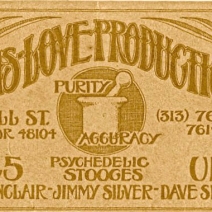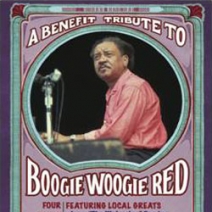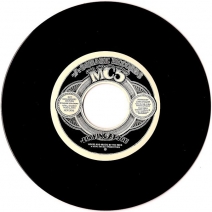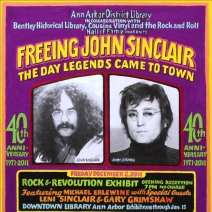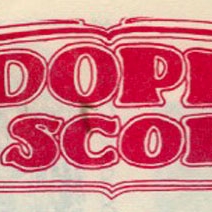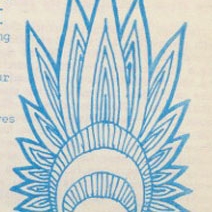Gary Grimshaw
25 February 25 1946 – 13 January 2014
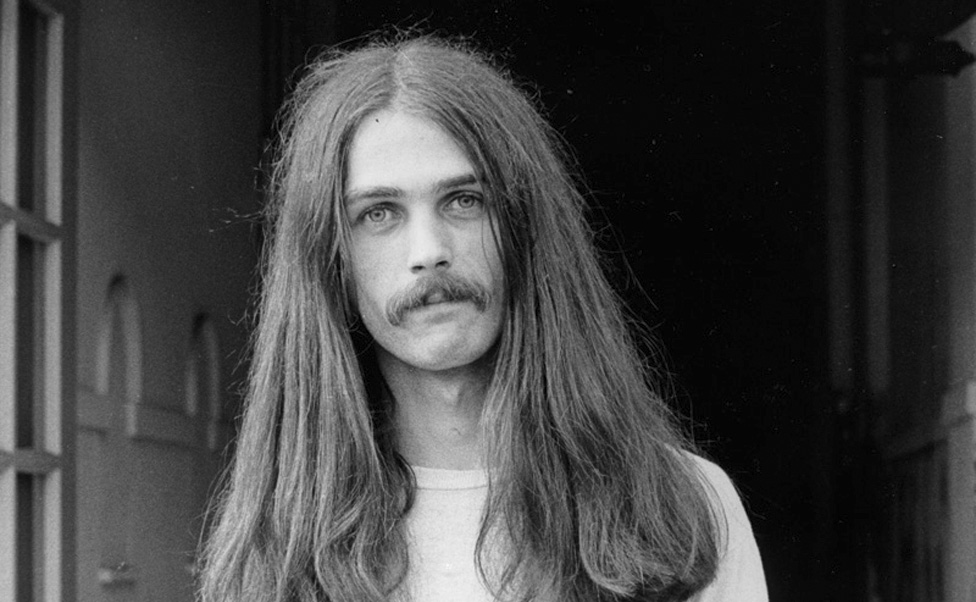
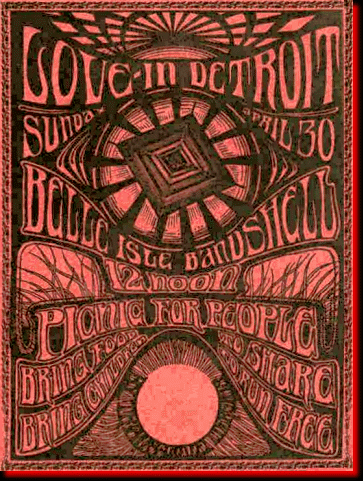 Gary Grimshaw (February 25, 1946 – January 13, 2014) Poster artist, activist, graphic designer for the Detroit Artists Workshop, Trans-Love Energies, White Panther Party, Minister of Culture.
Gary Grimshaw (February 25, 1946 – January 13, 2014) Poster artist, activist, graphic designer for the Detroit Artists Workshop, Trans-Love Energies, White Panther Party, Minister of Culture.
“There is a long history of artists making music the subject matter of their work,” Grimshaw told Mojo in 1997. “It’s difficult because you’re trying to make a picture of something that can’t be seen. But it’s even more difficult for musicians, because when they perform it dissipates into the air and is gone. Just to get to the point where they can make a record, it takes years of all this energy disappearing as soon as it’s made. Whereas everything a graphic artist does he can hold in his hands. That’s why serving the music has always seemed honorable to me.”
“I first hooked up with the Artists’ Workshop in 1966. I’m a Vietnam veteran and I’d just come back from Vietnam. Rob Tyner [of the MC5] was my best friend. I’d go to these Sunday concerts, all day, all night.
My thing is art and printing, and John did a lot of it. They had an art department and I just jumped in and started doing stuff with them. It was really community-centered. I came from Lincoln Park, and there is no community in Lincoln Park.
With the Artists’ Workshop, I polished my skills in writing and publishing. I learned a lot. It was really an education for me. There was a lot of activity.
That stereotype of hippies, I hate that word; it’s a media invention. Detroit is a lot different from San Francisco, where the hippie mystique first started. There’s a work ethic here, people from working-class roots. It was more like, let’s smoke weed and do something. Let’s drop acid and do something. Not just sit around and contemplate our navels.
We went to Ann Arbor in ’68 because the police ran us out of Detroit. Every time you left the building to buy cigarettes you’d get pulled out and searched. Four squad cars would pull up and they’d look around and sniff around and leave. And this was routine. It got too dangerous for us. When the place came up in Ann Arbor, a big fraternity house, the MC5 wanted to live together so we got this big place.
In the late ’60s in Detroit, the government and the police had this attitude that they were under siege from the Black Panthers and the hippies. They wanted to whap them over the head and get rid of them. When Coleman Young got elected and appointed a black police chief, I thought, “Phew, it’s safe to move back.” And I did move back right after that. I was thrilled when Coleman Young was elected. I thought, “No more harassment.” –Gary Grimshaw, quoted in Metro Times, Nov. 3, 2004
Gary Michael Grimshaw is a graphic artist specializing in the music business since his first concert poster design in 1966. He was the primary poster and light show artist for Detroit’s legendary Grande Ballroom through 1969. During this time he also created art for Detroit’s notorious rock & roll band The MC5. Currently an album cover design for the MC5’s first album “Kick Out The Jams” painted in 1968 is on view at Cleveland’s Rock & Roll Hall Of Fame & Museum. Gary established a connection with the SF Bay Area with frequent trips out west 1966-1970, where he worked for the beautiful newspaper, The San Francisco Oracle. —Gary Grimshaw
“The rock world lost one of its pioneering concert poster artists on Monday when Gary Grimshaw passed away at the age of 67 in his home town of Detroit after a long battle with a variety of illnesses.” —Billboard Magazine
“Heaven will be a little more psychedelic today,” Grimshaw’s friend, former Detroit concert promoter Gail Parenteau, told the Detroit News. Parenteau went on to describe Grimshaw “as brilliant a rock star as any of the legendary bands and events he imagined in his iconic poster art.”
“Gary Grimshaw is probably the first nonWest Coast artist to join the ranks of the major psychedelic artists like Wes Wilson and Rick Griffin. Although Grimshaw now lives in the Bay Area and has, over the years, spent considerable time there, he is first and foremost a Michigan artist. For the most part, Grimshaw’s finest work was done for venues in the Midwest, in Michigan and sometimes Ohio. And here is a working artist, in the finest sense of the word. Coming from a family of draftsman, illustrators, and printers, Grimshaw was immersed in colors and form from an early age. And while his poster work can be divided into several distinct periods, we should not forget that Grimshaw also produced an almost endless variety of flyers, advertisement, handbills, and what-have-you for the alternative community. I am not aware of any artist in psychedelic era that has produced more work that Gary Grimshaw.”
— by Michael Erlewine: The Poster Style of Gary Grimshaw
“Grimshaw’s vivid fliers and posters for the legendary Grande Ballroom in the late 1960s featured artists such as the MC5, Cream, the Yardbirds and Paul Butterfield. His style went beyond psychedelic, and is instantly recognizable to rock poster fans, and highly collectible.“He gave a visual punch to the music scene, he used colors — he was the artist of a generation,” his friend Becky Tyner told Whitall. “But it wasn’t just limited to the ’60s or ’70s, he’d been doing things recently, too.” -Susan Whitall, The Detroit News
“Grimshaw comes from a family of graphic artists. As a student in the Lincoln Park area, he worked in his uncle’s print shop in Dearborn, Michigan, where he was introduced to the printing process. He was drawing all the time. In high school, he was involved in graphic projects, including designing T-shirts with his friend Rob Tyner, who was to become the lead singer for the notorious band, the MC5. Grimshaw went on to be the principal artist for that group.” –Michael Erlewine; Grimshaw Biography
Tags: Gary Grimshaw, Psychedelic Art

